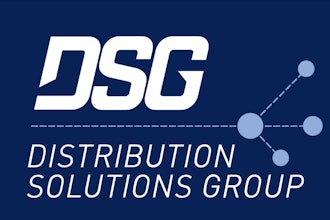We’re excited to provide the readers of Industrial Distribution with the results of our 70th annual Survey of Distributor Operations. The objectives of this report, as always, has been to understand the most critical issues affecting distributors and to provide data to help drive their educated business decisions. Through these results — pulled in late March and covering the previous 12 months — we’ll discuss new and ongoing industry trends and what trends have fizzled. Last year’s findings largely corresponded with the tough times industrial distributors were experiencing in the middle of an industrial recession. Are distributors now experiencing recovery that matches market reports? Read on to find out.
Our survey covers the following areas:
- Demographics — This establishes a profile of survey respondents based on company size, years in business, sales volume and product line.
- Challenges, Trends & Economy — This outlines the initiatives distributors are undertaking to address key business and market concerns. It also covers mergers and acquisitions and how distributors view the impact of the economy.
- The Balance Sheet — This offers insights into revenues and profitability and addresses areas of investment, concern and other analysis of factors impacting revenue.
- Best Practices — This sheds light on distributor relationships with suppliers and customers, as well as their global business plans and what challenges are involved.
- Tech Usage & Investments — This covers areas like e-commerce and other big-impact technology solutions for now and the future.
- Value of the Distributor — This addresses the reasons our survey respondents believe customers do business with them and which service offerings play a significant role in the industry.
- Employment — This identifies hiring and layoff trends, recruitment and compensation.
You’ll notice that this year’s survey section is considerably shorter than in past years — less than half the length of last year’s. That’s because, starting this year, we’ve decided to include only the most pertinent survey stats in our print issue and then make the full report available to download online. That report will contain more stats, charts and commentary beyond what is included here and in the print magazine version.
In the May/June print magazine, we originally stated the full report would be available May 18, but since it took a little longer for us to finalize than anticipated, that date is being pushed back. We'll let you know as soon as we have a new date picked out!
For the online version, this is Part one of three, so stay tuned to ID for the rest.
Methodology
The results of this study are based on an email survey sent to Industrial Distribution subscribers in March 2017. Recipients of the survey were offered an incentive to complete the questionnaire. Industrial Distribution’s subscriber base is comprised of 30,000 readers, the majority of whom identify as executive, upper management, sales or sales management. Results are based on a pool of respondents within this subscriber base.
Comments on this year’s results? Email ID editor Mike Hockett at [email protected]
DEMOGRAPHICS
Out of all our survey sections, the one with the least amount of change tends to be demographics, and that was the case again this year with essentially the same size number of respondents as in 2016. The nature of our readership reflects this granularity, as the majority is comprised of small-to-midsized distributors (figure 1). Nearly 55 percent of our respondents had 2016 sales of $50 million or less and 33 percent had sales less than $10 million. On the other end of the spectrum, 27 percent had sales of more than $500 million, but part of that likely represents fewer different companies since some of those respondents likely work for the same business.
The largest geographic segment of respondents is the Midwest at 29 percent — down seven percentage points from a year ago. The Northeast is second at 23 percent (+3 points), followed by the Southeast at 16 percent (+6), the South at 12 percent (+5), the West at 9 percent (-1) and Southwest at 5 percent (-4). Just over 5 percent of our respondents are from outside the U.S.
Some other demographic stats:
- Nearly 45 percent of respondents have been in business 50 years or more, while 54 percent represent a family-owned business — down almost 11 points from last year’s survey.
- Almost 66 percent of respondents say their number of product lines expanded in the past year, up 10 points from last year’s survey.
- The most popular product categories our respondents’ businesses sell into are: MRO supplies at 49 percent; hand tools at 49 percent; lubricants at 45 percent; safety at 44 percent; adhesives and sealants at 42 percent; material handling at 41 percent; cutting tools at 41 percent, power tools at 38 percent; and motors, controls and drives at 38 percent.
- As for markets our respondents sell into, the biggest movers were: energy, down six points to 45 percent; aerospace, down five points to 32 percent; and government, up four points to 54 percent.
CHALLENGES, TRENDS & THE ECONOMY
These past two years have been rough on the industrial supply market, to say the least. Almost all of the publicly traded distributors on ID’s Big 50 List suffered year-over-year sales and profit declines, with some seeing declines in for at least four or five consecutive fiscal quarters. This was especially evident for distributors that rely heavily on oil and gas customers, where product demand has been reduced the most since early 2015. Not just for the big guys, either. Many small and midsize distributor executives ID has spoken with over the past year have relayed their struggles that have been tied to customers putting a halt on capital spending.
Thankfully, the U.S. industrial economy has seen a considerable rebound since the start of Q4 2016. Customers are, slowly but surely, resuming capital spending and many well-known economic indicators have been trending positive for at least the past six months.
This economic optimism is reflected in our survey. When asked to identify up to three primary concerns (figure 2), 68 percent of our 2016 survey respondents chose economic conditions — the top choice by more than 27 percentage points. This year, only 39 percent of respondents chose economic conditions as a primary concern. That still ranks No. 3 the list of 18 concerns we listed, but shows distributors are feeling much better about the current industrial economy.
Price competition was respondents’ No. 2 concern this year at 47.5 percent, up seven points from 2016; distributor competition was next at 40 percent, up 8 points; manufacturers selling direct was tied for No. 3 at 33 percent, with its 11-point increase the biggest one-year jump on the list; while finding more qualified people was also picked by 33 percent.
Among other concerns that respondents wrote in, employees’ healthcare benefits one-third of them.
Merger and acquisition (M&A) activity remained strong over the past year, though our survey indicates it wasn’t quite at the level of the previous two years. Only 6 percent of our respondents said their company merged or was acquired in the past 12 months, down four points from last year. Another 24 percent said their company was approached, but a merger/acquisition did not go through. Looking ahead, the amount of respondents who expect M&A to increase — 38 percent — dropped by 6.5 points from last year, while 70.5 percent of respondents said they would not be agreeable to a buy-out — up more than two points. Likewise, 71 percent of respondents said they are not actively looking to purchase another distributor — up three points. Perhaps the industrial recession has induced a cooling off period M&A? Only time will tell.























